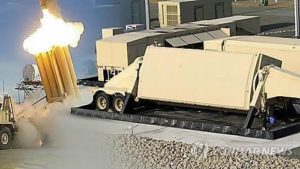
The Korea Herald:
The South Korean government and the ruling party agreed to speed up the completion of its three-legged defense system from the initially planned mid-2020s to early-2020s, in light of the ever-evolving threats from North Korea.
The ruling Saenuri Party also strongly called for the procurement of nuclear-powered submarines here, a matter that the government said it will “carefully consider.”
“Considering the recent security threats like the North’s Sept. 9 nuclear test, we agreed that our defense capacities should be augmented by adding to the previously suggested (defense) budget,” a Defense Ministry official said, debriefing reporters on the government-party meeting held early Tuesday morning.
This means completing the so-called “3K” homegrown defense system against Pyongyang’s nuclear and missile threats earlier than initially planned, the official explained.
The meeting was attended by Defense Minister Han Min-koo, Defense Acquisition Program Administration Minister Chang Myoung-jin, Vice Finance Minister Song Eon-seog and Saenuri lawmakers and discussed the topic of South Korea’s countermeasures against North Korea.
The first part of the “3K” is the Kill Chain, bent on striking the missiles before they are fired. The Korea Air and Missile Defense system is about intercepting the missiles in mid-air, while the Korea Massive Punishment and Retaliation is about striking the North Korea leadership after attack.
The most recently-announced KMPR also includes the possibility of a preemptive attack, upon certain signs of imminent attack by the North.
While the military has been vague on exactly when the systems will be finished, it is believed to be around 2023.
“I would say it would be sped up by around two or three years,” the official said.
The extra budget needed per year is estimated to be around 200-300 billion won ($176 million-$264 million).
Augmentations for 2017 include bringing in two anti-ballistic missile radars instead of the previously planned one, increasing the number of Taurus air-to-ground missiles by 90 and deploying navy helicopters ahead of schedule. It would bring the total number of ballistic missile radars to four.
It is yet unclear whether the Saenuri and the government’s plan will receive consent from the opposition, who has not seen eye to eye with them on defense issues such as deployment of the US Terminal High Altitude Area Defense system.
The plans for the Navy helicopters have yet to be cleared at the government-civic defense acquisition program committee, chaired by the defense minister.
